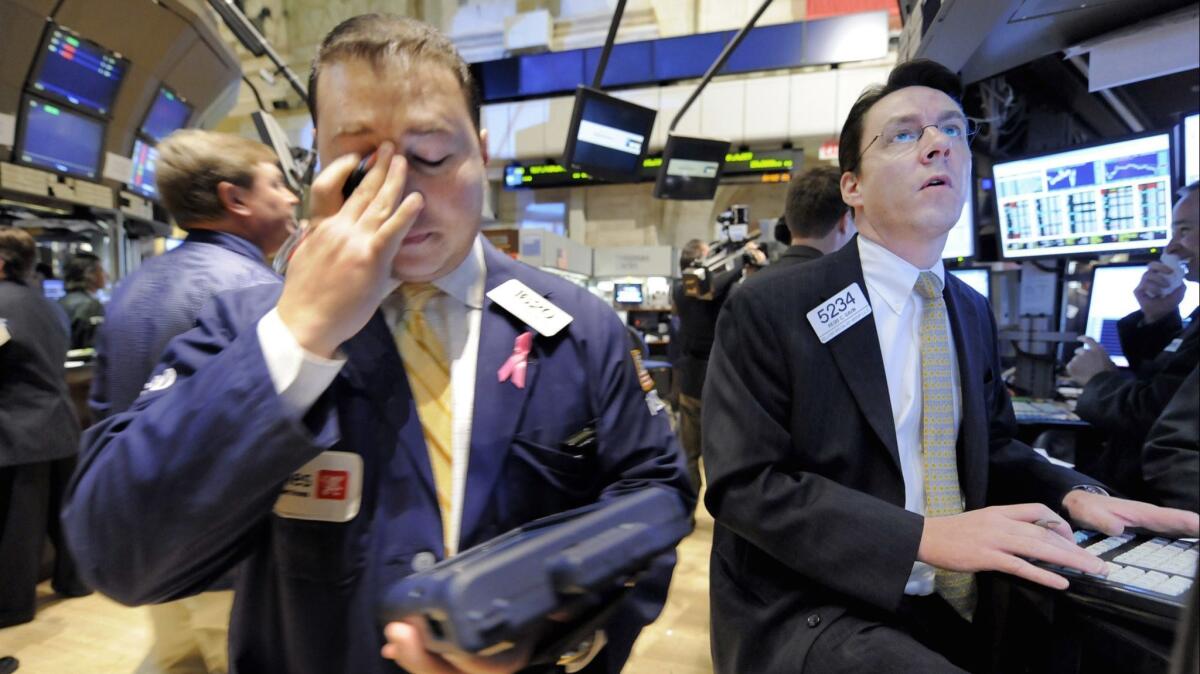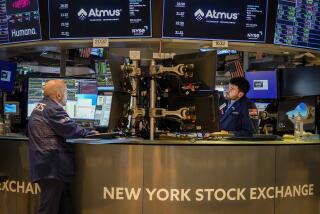Op-Ed: 10 years after the fall of Bear Stearns, D.C. is poised to cause another financial crisis

Ten years ago this week, Bear Stearns, the high-flying Wall Street investment bank, collapsed after years of reckless risk-taking and regulatory neglect. Its stunning failure blindsided the public officials charged with safeguarding our financial system and marked the moment when the simmering financial crisis burst into full public view. Before the crisis passed, millions lost their homes and jobs, communities across the country were devastated and trillions of dollars of wealth were wiped away.
The anniversary of Bear’s demise might have gone unnoticed but for the disturbing push by the banking industry to undo a number of the reforms enacted in the wake of the crisis.
Bear’s failure shouldn’t have come as a surprise to regulators. It was wildly overleveraged, with only $1 in equity for every $38 in debt, meaning a drop in asset values of less than 3% would wipe out the firm. The firm was knee deep in subprime mortgages — originating loans, bundling mortgages into securities and bundling those securities into other securities. To sustain itself, Bear was borrowing up to $70 billion in the overnight markets, loans that had to be renewed each day. If those loans were pulled, the firm would collapse — they were and it did.
Congress is doing its part to destabilize the system again.
On March 11, 2008, just three days before the firm’s meltdown, Christopher Cox, chairman of the U.S. Securities and Exchange Commission, expressed “comfort about the capital cushions” at the big investment banks, including Bear. His calming words were consistent with the repeated assurances given by Treasury Secretary Henry M. Paulsen and Federal Reserve Chairman Ben S. Bernanke that the woes in the subprime mortgage market did not threaten the overall economy.
How could it be that the people trusted with protecting the public from Wall Street excesses could be so oblivious?
In the three decades leading up to the 2008 financial meltdown, Wall Street had successfully pushed a deregulatory agenda. Congress and successive administrations stripped away key safeguards and constrained the budgets and powers of regulators. By the 2000s, men like Cox who favored a light touch sat atop key oversight agencies. Critical areas with trillions of dollars at risk, such as over-the-counter derivatives and overnight borrowings — like the ones that brought down Bear — were kept hidden from view. Simply put, as Wall Street piled risk on top of risk, the sentries abandoned their posts.
When the economy crashed, the federal government bailed out the banks and implemented stricter rules under the auspices of the Dodd-Frank reform law. But after nearly a decade of systemic stability, an expanding economy and record bank profits, Washington is poised to repeat the same old mistakes.
The people appointed by President Trump to head financial regulatory agencies — Treasury Secretary Steven T. Mnuchin, Comptroller of the Currency Joseph Otting, SEC Chairman Jay Clayton and Commodity Futures Trading Commission Chair J. Christopher Giancarlo — have one trait in common: their lifetime service in and fealty to the financial industry. The one person heading a key regulatory body who is not from the financial sector, Mick Mulvaney at the Consumer Financial Protection Bureau, has made no secret of his contempt for that agency. These appointees have already made clear their intentions to reduce oversight and retreat on enforcement.
Congress is also doing its part to destabilize the system again. Just this week, Senate Republicans joined with a rump group of Democrats to pass legislation rolling back important post-crisis protections. Among other things, the bill would lessen oversight of 25 of the nation’s 38 biggest banks; exempt a slew of financial institutions from reporting mortgage lending data; weaken prohibitions against steering borrowers into higher-cost loans; and reduce the frequency of stress tests on the nation’s biggest banks from semi-annually to as little as once every three years.
But this legislation is almost certainly not the end of the story. Buttressed by over $3 billion in lobbying and campaign spending since 2008, the recidivist banks are unlikely to settle for half-measures in their renewed quest for deregulation.
The only missing ingredient for another crisis is Wall Street excess — as sure to come as the sun is to rise.
Happy 10th Anniversary, America.
Phil Angelides, former California state treasurer, was chairman of the Financial Crisis Inquiry Commission, which conducted the nation’s official inquiry into the 2008 financial crisis.
Follow the Opinion section on Twitter @latimesopinion or Facebook
More to Read
A cure for the common opinion
Get thought-provoking perspectives with our weekly newsletter.
You may occasionally receive promotional content from the Los Angeles Times.





